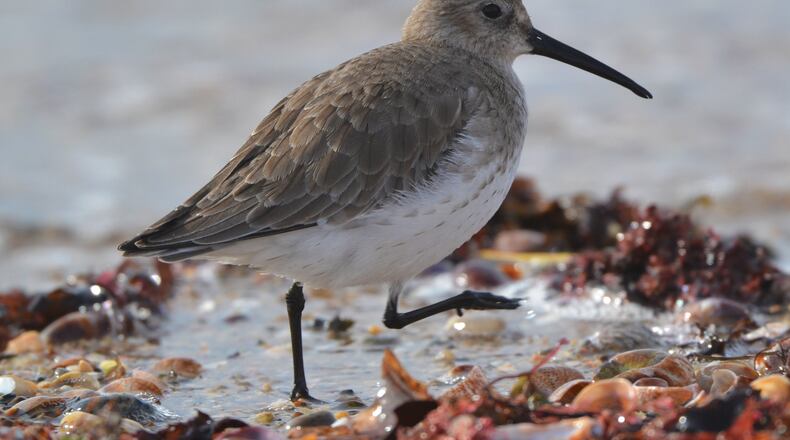Some 70 of Georgia’s top birders will spend a day at the beach on Tuesday. The event will be the Midwinter Shorebird Survey in which the birders fan out by foot, boat and vehicle along the state’s 100-mile-long coast to tally shorebirds congregating on offshore sandbars and more than 20 barrier island beaches.
Started in 1996, the annual effort has become an important one-day snapshot to help determine if conservation programs for coastal birds are working or in need of upgrade.
Shorebirds are a distinct group of water birds that live along the shore and share certain characteristics, such as round heads and long, pointed beaks for probing in sand, gravel and water for small crustaceans and other morsels.
More than 20 shorebird species may spend at least part of winter on Georgia’s coast. They include plovers, willets, yellowlegs, curlews, dowitchers, oystercatchers, sandpipers, red knots, dunlins, marbled godwits, avocets and turnstones. Many of them nest during late spring in the Arctic Circle.
“Georgia is so important for shorebirds,” said Tim Keyes, a state Department of Natural Resources ornithologist. The state’s temperate climate, extensive coastal foraging areas and sparse development on barrier islands provide significant resources and limited disturbance, he said.
Last year’s total was 70,408 birds of 25 species, an average count for Georgia although overall shorebird populations are declining. The most numerous species was the dunlin, a small wading bird that made up half the total.
Getting special attention this year will be a sparrow-sized shorebird, the piping plover, which is on the federal Endangered Species List. Another bird of special concern will be the American oystercatcher, whose numbers are declining due mostly to coastal development.
Birders in the Savannah area also will keep an eye out for another “special bird,” a bar-tailed godwit, which nests across the Eurasian Arctic. The first sighting on record in Georgia of the shorebird was made by Keyes and a colleague in November.
IN THE SKY: From David Dundee, Tellus Science Museum astronomer: The moon will be first quarter on Wednesday. Mercury and Mars are low in the east just before dawn. Venus rises in the east a few hours before sunrise. Jupiter is high in the south at sunset. Saturn is in the west just after dark.
Charles Seabrook can be reached at charles.seabrook@yahoo.com.
About the Author
Keep Reading
The Latest
Featured


